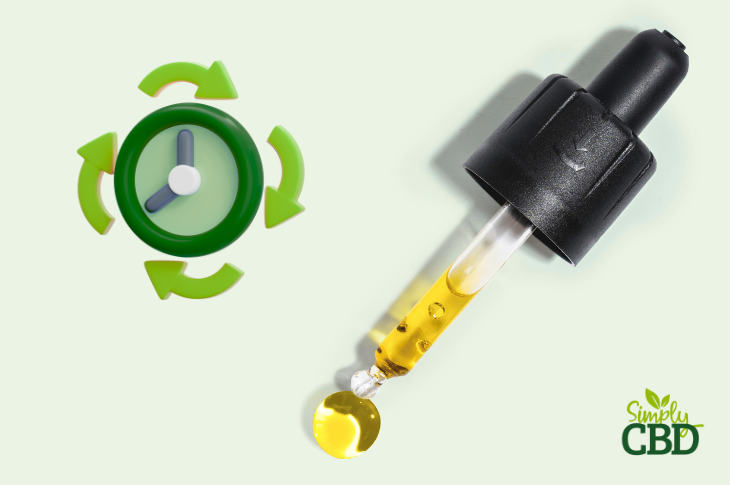
Panic disorder is a type of mental health condition that can be very difficult to live with. Due to the ways that it impacts the body both mentally and physically, it can inhibit people from partaking in regular daily activities. As with many mental health disorders, stigma and various misconceptions are attached to this condition. Gaining a better understanding of panic disorder and how it can be detrimental to people’s lives can help cultivate more widespread awareness and support for sufferers.
What is panic disorder?
While feeling some anxiety from time to time is normal, having regular bouts of extreme anxiety and panic attacks can indicate a panic or anxiety disorder. Panic disorder is a specific type of anxiety disorder. The attacks that occur as a result of this condition are often sudden and very frightening. Anyone can suffer from this condition, regardless of age or gender.
Panic disorder can increase the risk of developing other issues, such as agoraphobia (fear of leaving the house/being in public). This is because some people’s symptoms occur as a result of specific situations, which can include being in public places. While agoraphobia doesn’t occur in every person with panic disorder, avoiding certain situations that are likely to cause an attack (often referred to as a ‘fear of fear’) is fairly common. While this condition can cause very intense and uncomfortable symptoms, it won’t cause physical harm and can be treated in many different ways.
Panic disorder causes, symptoms, and treatment options
To fully understand panic disorder, it’s crucial to learn the various causes, symptoms, and treatment options associated with it.
Causes
There’s not always an obvious or clear-cut cause of a person’s panic disorder. However, there are some factors that are believed to contribute to its development, which include:
- A traumatic event
- Bereavement
- A chemical imbalance in the brain
- Severe bouts of situational stress
- Having family member(s) with the same condition
Symptoms
Panic disorder causes general feelings of anxiety, as well as panic attacks. According to the NHS, the symptoms of a panic attack may include:
- Feeling dizzy or faint
- Heart palpitations or a racing heart
- Pain in the chest
- Feelings of dread and extreme fear
- Many people feel as though they’re going to die while in the midst of a panic attack.
- Shakiness or trembling
- Nausea or a sensation of churning in the stomach
- Vomiting can also occur in some severe cases.
- Feeling short of breath
- Sweating and hot flushes
- Chills
- Numbness or tingling
- Feeling disconnected from the body
- This can feel like a loss of control to some people.
- Dry mouth
- Ringing ears
- A sudden need to go to the bathroom
- A choking sensation
Some of these symptoms are similar to what people with generalised anxiety disorder (GAD) experience. However, panic is the most severe form of anxiety. This means some of the symptoms above are exclusive to panic attacks or are much more severe during panic attacks than in generalised anxiety disorder.
Panic attacks typically last for between five and 20 minutes. However, some people with panic disorder experience attacks that last for much longer. The frequency of attacks also differs between individuals. Some people may experience a couple of panic attacks per month, while others may experience them multiple times per week. This discrepancy can stem from various factors, such as what triggers an attack and the severity of the condition.
Treatment options
The symptoms of panic disorder can improve with treatment and various options are available. Some benefit from a singular treatment while others find better results from a combination of approaches. The main treatments for panic disorder are:
- Medications
- There are various types of medications that can help with panic disorder, such as SSRIs, beta-blockers, tricyclic antidepressants, and even anti-epilepsy medicines.
- Talking therapies
- The most common type of therapy used for panic disorder is cognitive behavioural therapy (CBT), but other options are available.
- Specialist options
- If the above options don’t work, patients may be referred to a specialist (such as a psychiatrist) who will devise a new treatment plan.

Debunking misconceptions about panic disorder
Many people perceive those who suffer from panic disorder as weak, fragile, or emotionally unstable. Others don’t believe that the physical effects of this condition are real and that people are exaggerating their symptoms for attention. These harmful viewpoints discredit panic disorder as a legitimate condition and cause a stigma that can prevent people from seeking help.
Anyone, no matter how mentally and physically strong they are, can develop this condition. Even people who don’t have panic disorder may have occasional panic attacks in stressful situations. It has nothing to do with strength and everything to do with the body’s fight or flight response. In people with panic disorder, this response is heightened and can be triggered unexpectedly. The symptoms that people experience as a result are very real and can mimic the symptoms of serious health emergencies, such as a heart attack.
Raising awareness and supporting sufferers
As panic disorder is a lesser-known type of anxiety disorder, raising awareness of it is very important. Doing so can dispel stigma and misconceptions while helping people with the condition to feel more understood and supported. Raising awareness can come in many forms, whether it’s sharing info online or in peer groups, wearing a teal awareness ribbon, or participating in awareness campaigns like International Panic Day (18th June).
In addition to cultivating awareness and support for the wider panic disorder community, it’s also useful to offer help on an individual basis. Those who know someone with the disorder can offer support in various ways. For example, offering to be someone they can turn to, taking them to therapy appointments, accompanying them to locations or events that may trigger an attack, and helping them work through attacks when they occur can all make a big difference.
Panic disorder support groups
Support groups can be an invaluable resource for people who suffer from panic disorder. Regardless of group size or location, the aim of each group is to help people with similar experiences connect and support each other. They can then ask specific questions, offer first-hand advice, and share their stories with others. Some groups meet in person, while others are solely virtual.
Groups via mental health charities
Mind, one of the UK’s leading mental health charities, offers a directory that allows people to find support close to where they live. They also have an online peer support group called Side by Side for those who prefer virtual options. Anxiety UK offers support groups via Zoom that are moderated by experienced group facilitators on Thursday and Sunday evenings. These groups are open to anyone with some form of anxiety disorder, including panic disorder.
Groups via social media
In addition to groups run by charities, social media can be a great way to find support groups for panic disorder. GAD (General Anxiety Disorder), Panic Disorder, and Stress Support Group is a large and very active group on Facebook with over 38K members and more than 1000 posts per month. Anxiety & Panic Attack Support (UK Only) is a mid-size group with around 12K members and 500 posts per month. For those who prefer a smaller community, Positive Support for Anxiety and Panic Disorder Sufferers has under 4K members and only around 15 posts per month. Each person thrives in different environments, so the most important factor is finding what works best for each individual.
Importance of support groups
Panic disorder is very difficult to fully understand for those who don’t have it. This can cause people who do suffer from it to feel isolated and misunderstood and may even prevent them from seeking the help they need. These communities make sufferers feel less alone and can even help them find new useful resources and treatment options to try. This is why support groups for people with similar experiences are so important and beneficial for people with panic disorder.










